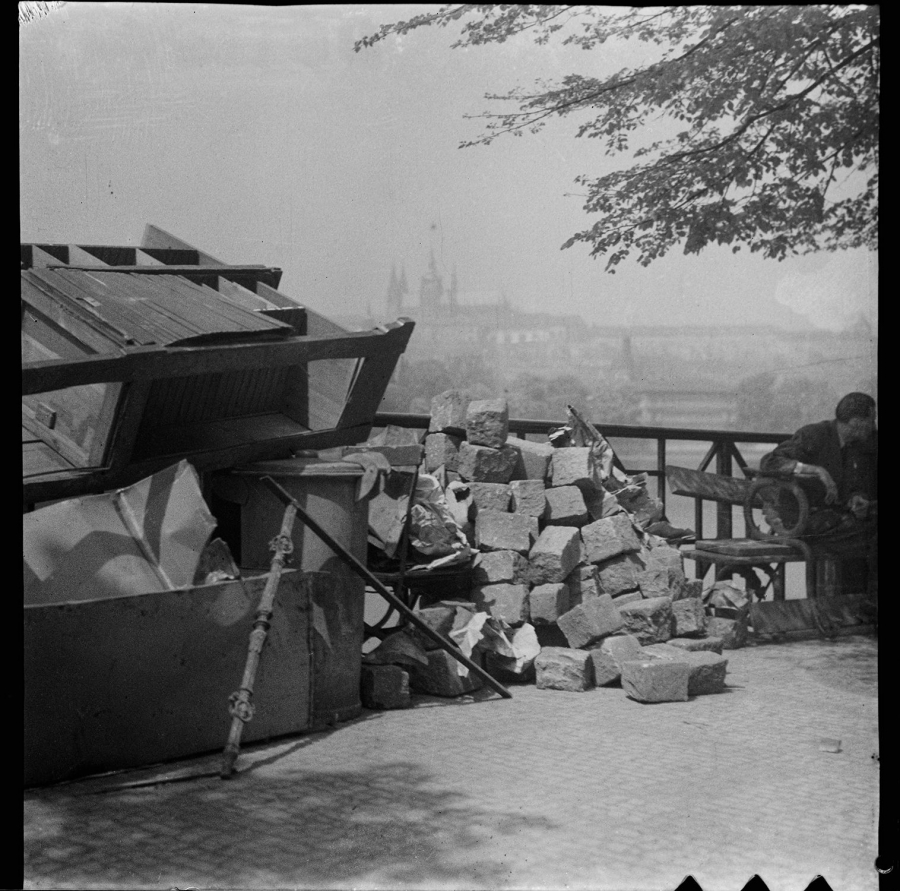Barricade at Smetana's Embankment
“Barricades! What heroism, what bravery, self-sacrifice and fraternal solidarity grew and was born on these unusual constructions!”
The first of the numerous Prague barricades was spontaneously created on the first day of the uprising, on 5 May 1945. Appeals by the Military Headquarters of Greater Prague “Bartoš”, the Czech National Council (a resistance body bringing together local resistance organizations), and radio broadcasting encouraged their systematic construction. Specific instructions were even broadcast on the radio how the construction of the barricades should look. According to the survey of the People's Committee carried out after the war, up to 1583 barricades were built during the May Uprising in the capital city, later research even found evidence of more than 2000 barricades.
Tens of thousands of people in Prague, including women, children and elderly people, took part in their construction. The barricades were made of various material that was at hand: mostly of paving stones – up to 254 km2 of paving was used, also tram and train cars, automobiles, carriages, dustbins, banisters, streetlights, trees, furniture and such.
After the defeat of the Nazis, German inhabitants remaining in Prague were forced to take apart the barricades. In the postwar art and literature the motif of the barricades became widely used and is one of the most well-known symbols related to the events of May 1945.
The barricade in the photograph, or more specifically what is left of it during the cleaning work, is the only example of this motif in Sudek's work. The barricade ran parallel with the Legion Bridge across Smetana's embankment at the edge of Lažanský Palace.
